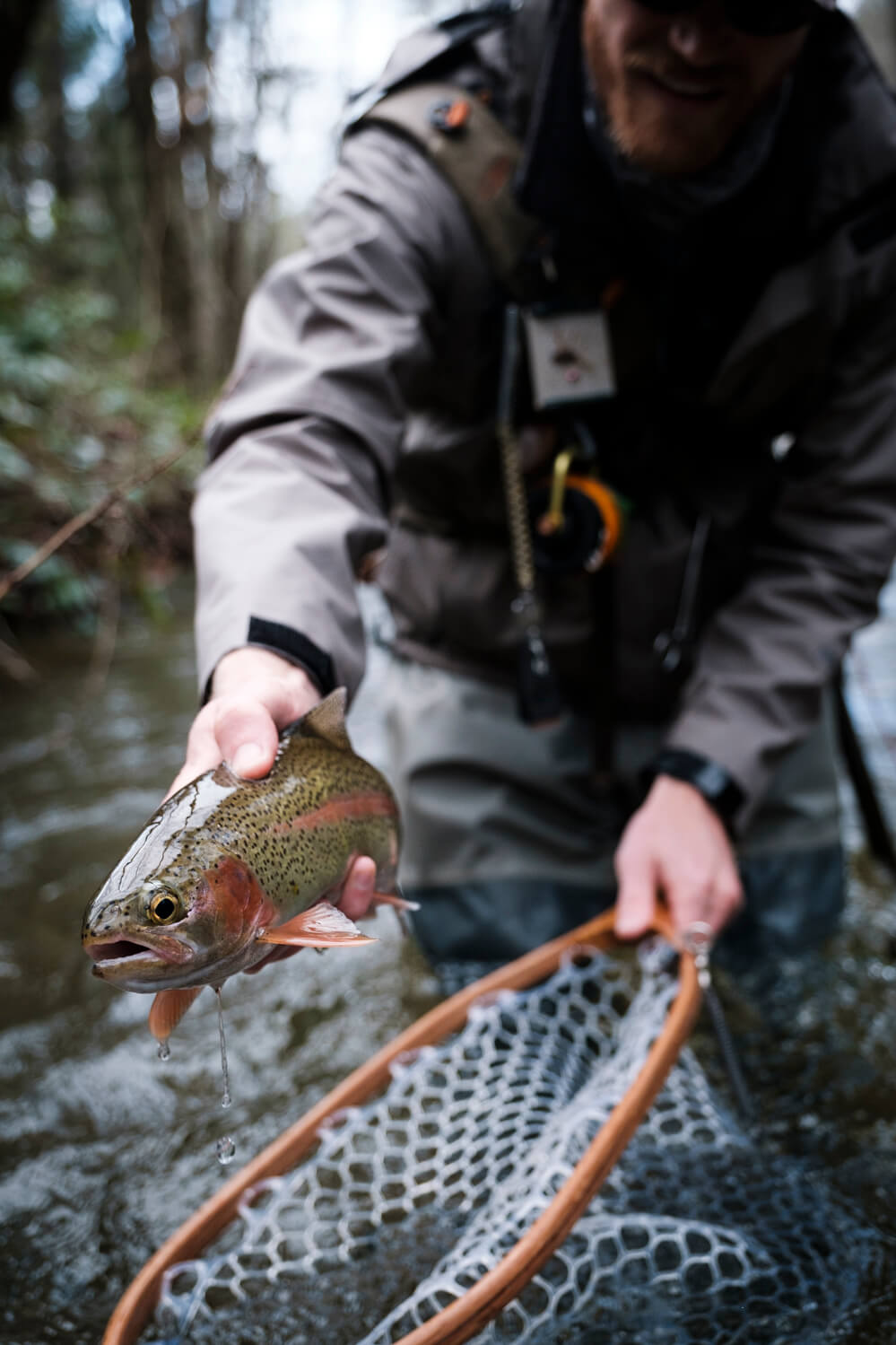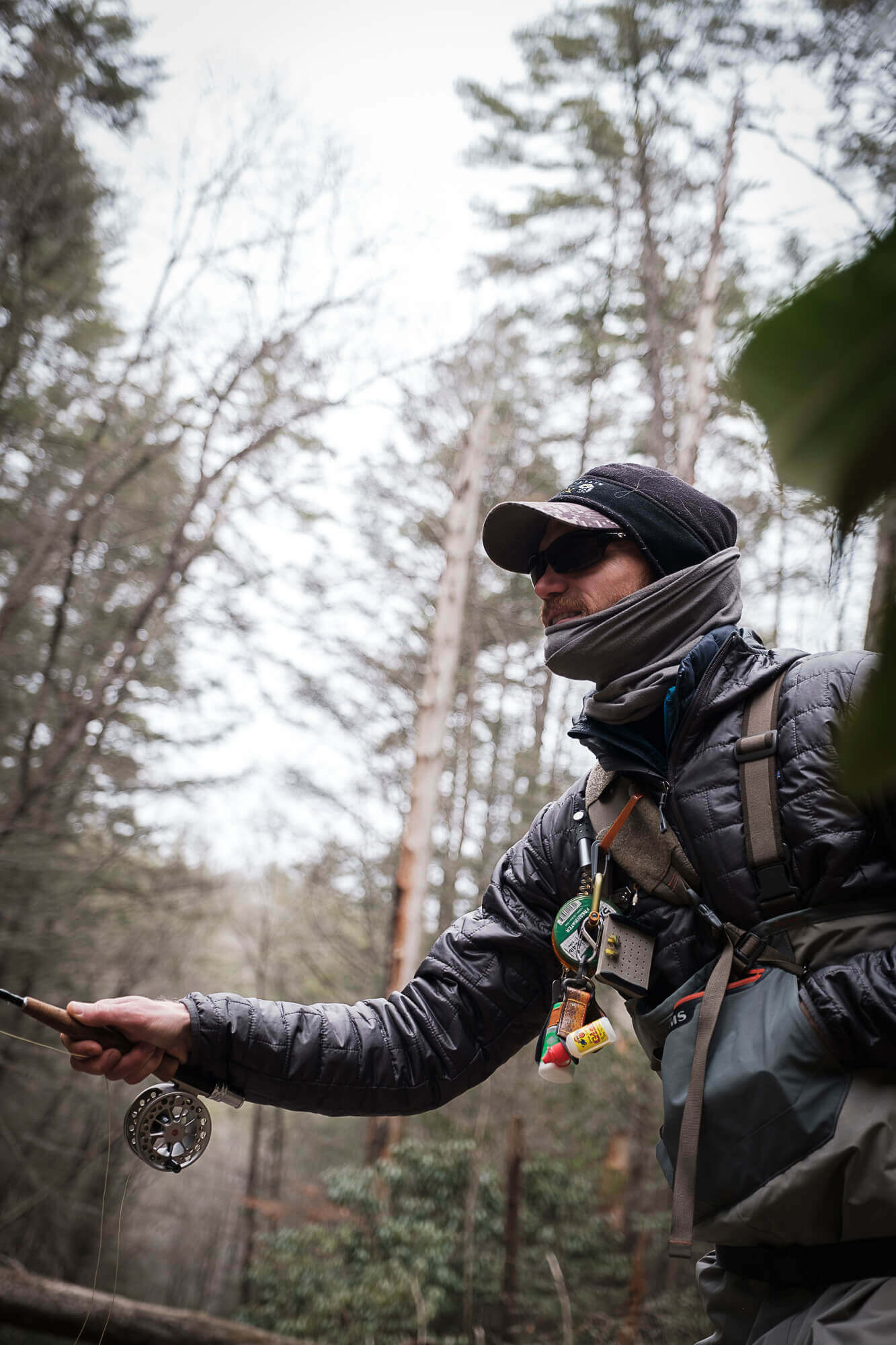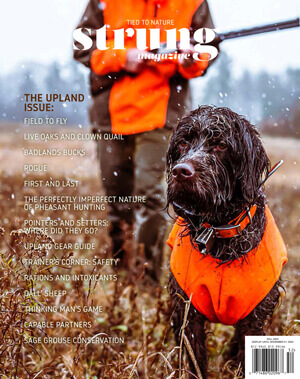How to Stay Warm When Fly Fishing in Cold Weather
By Sammy Chang
Georgia born and 150-pound-soaking-wet, with 100% Taiwanese blood coursing through my veins, cold weather and me were never meant to be kindred spirits. Unfortunately (or fortunately), my obsession with trout and the mountainous environs they reside in frequently pit me against said cold. Over the course of the past 15+ years, I have refined my cold weather layering system several times over, and it is with this trial and error that I’ve finally come to a system that works for me.
While this post is specific to a skinny Asian in relatively low-energy output settings (wading in cold water in the winter), the principals apply across the board whether you have more built in insulation than me, or your pursuits are more active. You can find an endless amount of information on the web about how to layer correctly. This post is intended to help guide your decisions on what to wear in specific temperature zones while wading in cold weather, based on personal experience. Once more, referring to my basal heat output and natural insulation (read none), if this system is able to keep me warm, it should work for most.
For your torso and up, the general principles are this. A baselayer, relatively close to skin (it does not have to be uber skin tight, Under Armour style), followed by a high pile or waffle fleece midlayer to trap the heat your body creates, followed by an insulating outer layer to maintain that heat within. You can add a synthetic vest just above the baselayer or midlayer depending on the air temperature. Additionally, you want these pieces to be synthetic or wool. Not cotton. And not untreated down. Standing in moving and cold water, the potential of falling in or getting wet is obviously higher, and wet cotton and wet down are not going to keep you warm.
For example, just yesterday, I was fishing in 30 degree air temperatures, with the water temperature being 37. Owing to my Asian roots, I am also very “thrifty” (some would call me cheap). I’ll chase down a snagged fly rather than break off and re-tie, unless it’s clearly too dangerous. I snagged and could not pop the fly loose with attempts from the surface. Trusting the strengths of my layering system, I rolled up my sleeves as best as I could, dunked my arm up to my bicep, and retrieved my fly. I squeezed as much water out of my sleeves as I could, rolled them back down, and instantly felt warmth return, without a subsequent cold hand and no gloves required. I owe this to synthetic materials that continue to insulate when wet, and a warm core keeping my circulating blood warm.
My specific layering system is as follows (and you don’t have to have the specific brand, just the general principles). This is in no way an advertisement for Patagonia; it just happens to be the brand that I’ve come to trust over the past 15 years. I was not paid to review their products.
- Baselayer: Patagonia midweight Capilene crew
- Midlayer: Patagonia R1 Pullover
- Outer Layer: Patagonia Nano Puff Hoody (you can swap the non-hoody version here, but having the hoody around your neck provides another layer of insulation)
- Baselayer: Patagonia thermal weight Capilene, zip neck (you don’t have to get the zip neck, but in colder weather I like that it can be zipped up and provide more warmth/insulation around my neck)
- Midlayer: Patagonia R2 jacket
- Vest: Patagonia Micro Puff vest (this is also optional; it’s such a lightweight but warm piece that it keeps my core warm, which is super important in maintaining warmth throughout the day)
- Outer Layer: Patagonia Nano Puff Hoody
For 20-30 degree weather: Seriously? I have my limits. Kudos to you if you are able to maintain function in these temperatures, but I am not, so the buck stops here for me. I suppose I could layer up more or thicker, but then I’d be Ralphie from the Christmas Story and “I can’t put my arms down!” nonetheless have maneuverability to fish.
For temperatures warmer than 50, I think you can figure it out. A simple base layer and the mid layer, or the base layer and the outer layer should suffice. The good thing about getting the right gear is that it doesn’t lead to bulk, and is easy to pack away, and doesn’t limit your range of motion.
I realize, again, that I have focused on Patagonia products. This is not sponsored by Patagonia, and any number of brands out there including Columbia, Simms, The North Face, Orvis, and Filson will have similar products. Purchase based on your budget. My layering system was all purchased on sale during Patagonia seasonal sales.
Layering below the belt is much simpler. For cold weather (30 degrees or so), I wear a waffle-fleeced baselayer, made by Terramar, purchased off Sierra Trading Post 10 years ago for about $15. I pull wool ski socks over and then slip on my waders. It is imperative that your wading boots do not fit too tight. Leave them a tad on the loose side to allow blood to flow to your feet, and you won’t suffer from debilitating cold toes.
Back to my day yesterday on the water, 37 degrees under and never cresting 40 above, I felt remarkably comfortable in the set up I was wearing. My buddy was with me, and though he had a nearly identical base layer and outer layer, he lacked the midlayer fleece. He was never comfortable and always had a bit of a chill.
The nice thing about quality gear is that you can shed and stow it easily without taking up a bunch of space. Keep that in mind on days that start cold but have the potential to warm up.
I hope this helps. It is just my humble opinion, based on years of trial and error, and I hope it saves you time in selecting your kit and keeps you comfortable and on the water longer!
Key words: cold weather layering, cold weather wading, staying warm while wading
RELATED ARTICLES:
https://pnt.tta.mybluehost.me/shooting-in-low-light/
https://pnt.tta.mybluehost.me/gear-round-march-2020/
https://pnt.tta.mybluehost.me/summer-gear-guide/





